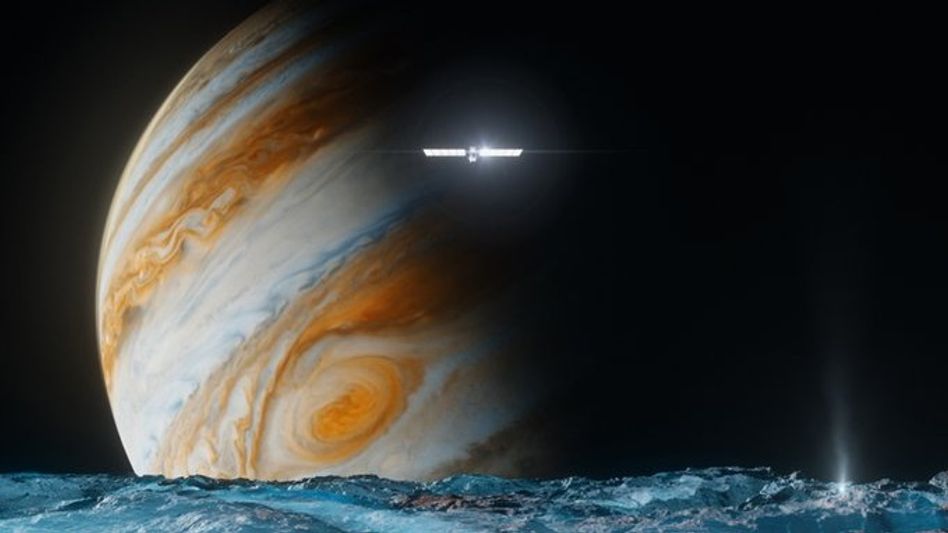NASA's Europa Clipper mission set to launch toward Jupiter's moon in search of signs of life
NASA's Europa Clipper mission aims to explore Jupiter's moon Europa for life signs. The mission will study the moon's ocean beneath its icy surface.
 NASA's Europa Clipper mission set to launch toward Jupiter's moon in search of signs of life
NASA's Europa Clipper mission set to launch toward Jupiter's moon in search of signs of lifeNASA’s highly anticipated Europa Clipper spacecraft is ready for launch from Kennedy Space Centre on Monday, October 14, embarking on a 1.8-billion-mile journey to study Jupiter’s moon, Europa. Scientists are eager to explore the moon's massive subsurface ocean, which could potentially harbour life.
The mission, delayed due to Hurricane Milton, will see the spacecraft carried into space aboard a SpaceX Falcon Heavy rocket. Once launched, Europa Clipper will make flybys of Mars in 2025 and Earth in 2026 to build momentum before reaching Jupiter in April 2030.
Europa Clipper's primary goal is to study Europa’s ice-covered ocean, believed to be twice the volume of Earth's oceans. The spacecraft will conduct 49 close flybys of the moon, using nine science instruments to collect data on its ice shell, subsurface ocean, atmosphere, and surface composition. Among the tools is a radar capable of penetrating the ice to examine the underlying ocean.
Although not designed to detect life, the mission aims to assess Europa's habitability and provide insights into conditions that might support life elsewhere in the solar system. NASA officials highlighted the mission’s potential to enhance our understanding of how life might develop beyond Earth.
The spacecraft will transmit data back to Earth via NASA’s Deep Space Network, with each transmission taking approximately 45 minutes to reach mission control. Europa Clipper joins an array of other missions exploring Jupiter, such as ESA’s Juice mission, launched earlier this year, and NASA’s Juno spacecraft, which has been orbiting Jupiter since 2016.
This mission builds on decades of exploration, from Galileo's early observations of Jupiter in 1610 to the modern achievements of Pioneer, Voyager, and Galileo spacecraft, all of which contributed valuable knowledge about the gas giant and its moons. The Europa Clipper mission represents the latest step in the search for life beyond our planet.
Copyright©2025 Living Media India Limited. For reprint rights: Syndications Today








